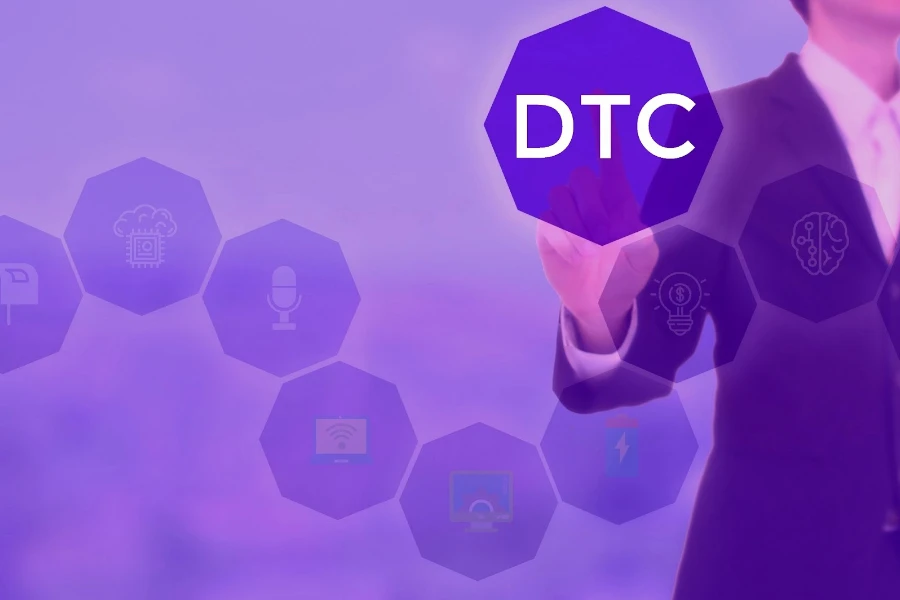Traditionally brands have partnered with wholesalers and retailers to sell products while utilizing one-way communication marketing strategies like magazine ads, TV commercials and brochures to spread their message. In recent years, direct-to-consumer (DTC) strategies have taken off as the internet and social media platforms continue to expand and change how we do business.
This article explores what DTC is as well as how it has evolved over time. Read on to understand how DTC can boost your sales and help your business become more competitive.
Table of Contents
What is DTC 3.0?
What DTC 3.0 can offer
DTC brand case study
Final thoughts
What is DTC 3.0?

DTC marketing is an evolving form of marketing that has been around for decades. The focus of DTC 3.0 is to create a positive customer experience by forging a direct line of communication with customers that will lead to an ongoing relationship. An improved understanding of the target audience through first-hand information allows brands to hone in on their wants and needs. The ability for companies to get this invaluable feedback phases out the need for in-depth market research and advertising campaigns.
Initially, it began in the 1990s with mail orders, where businesses sent letters directly to customers rather than relying on traditional forms of marketing. This DTC 1.0 allowed companies to market and do business with customers without the help of a middleman. Brands could now easily adjust their sales strategies based on first-party data.
The possibilities of DTC marketing shifted with the expansion of the internet. Businesses could now reach consumers through websites, personalized ads and emails. The era of DTC 2.0 focused on selling innovative products through online subscriptions but essentially replicated the offline DTC 1.0.
Taking the next step, DTC 3.0 uses the internet and direct interaction with potential customers to hone in on what they want. DTC 3.0 allows customers to interact with direct-to-consumer brands in the same way that brands previously could interact with customers. This balanced communication creates opportunities for better customer experiences and customer communities.
What DTC 3.0 can offer
Using DTC 3.0 marketing to obtain first-party data from your customer base will improve your relationship with your customers. It also enhances your relationship in another key area: protecting user data.
The internet age has brought about data collection through the use of cookies, which help deliver online ads to specific consumers. Social media and other sites collect, bundle and sell third-party data as a way for businesses to monitor consumer behavior and reach new customers. While businesses can use this marketing strategy to some effect, it causes distrust in the customer.
In recent years, data regulation is on the rise. In late 2022, Meta, the parent company of Facebook, agreed to a US$ 725 million settlement for violating its users’ rights by selling their data without consent. CNBC reports that multiple US states have established privacy laws that protect user data. This growing trend is forcing businesses to pivot their marketing strategies to DTC-based approaches.
While consumers shift more toward practical purchases, building a loyal customer base through DTC 3.0 principles to remain relevant is essential. By adopting this new DTC 3.0 marketing model, companies can appease their customers’ frustrations and collect voluntary data. A trust-based relationship will add value, comfort and enhance brand image.
Some ways to utilize DTC to create a healthy relationship with your customers include:
- Email marketing
- Social media influencers
- Livestreaming
- Social media channels
- Digital stores
- Custom products
- Product innovation
- Social activism
- Virtual stores
- SMS
- Upselling
- Subscriptions
- Digital marketing
- Interactive video content
Adopting a solid DTC 3.0 marketing strategy isn’t without drawbacks. Effective DTC marketing requires a significant investment of time and money to connect with the customer. As customers can communicate with the brand directly, receiving negative public feedback can be devastating, leading to a drop in sales. However, DTC can lead to a more devoted following despite these negative aspects.
DTC brand case study
Nike, the world’s largest athletic apparel company, has adopted a DTC approach. While Nike has used DTC business models since 2011, they’ve recently shifted focus to using DTC as their main marketing strategy. Nike has veered away from selling to wholesalers that sell its products in brick-and-mortar stores, instead opting to sell directly to consumers through its app, online store, the web and other digital channels.
Nike also uses influencer marketing and social media channels to grow brand awareness and offer a unique customer experience. There are also multiple ways for shoppers visiting a physical location to integrate a digital experience through numerous smartphone-integrated features.
Final thoughts
Utilizing DTC strategies can help your business improve its sales and customer experience. By ditching marketing practices that require the use of third-party data and embracing the collection of first-hand information directly from your customer base, you will be able to build a more loyal following.




